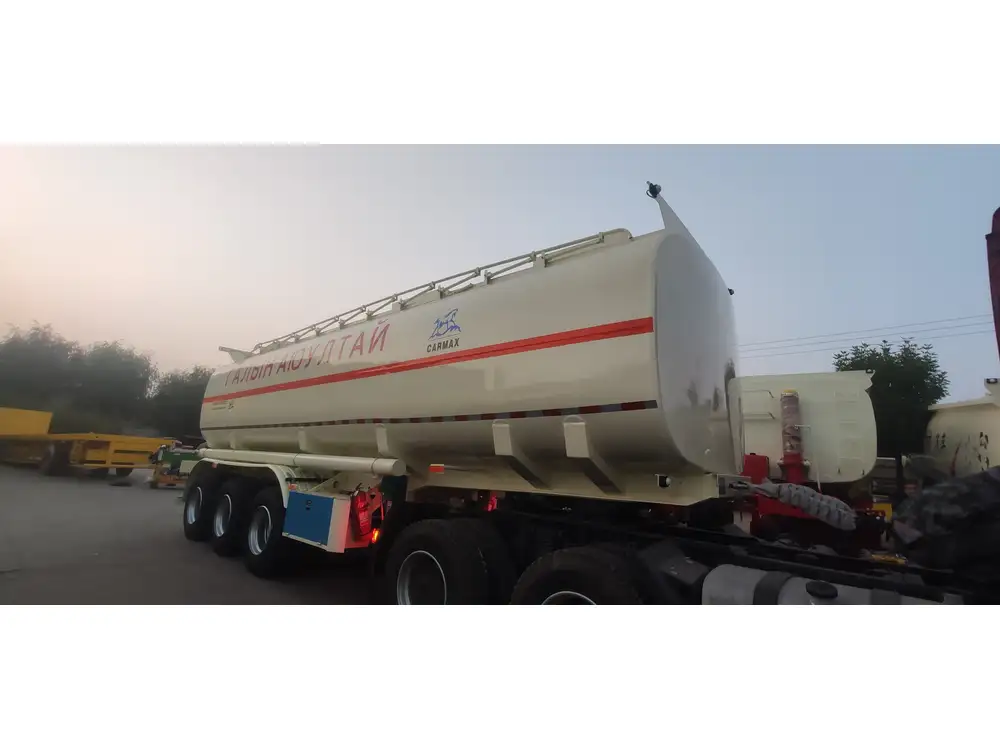In the world of semi-truck maintenance, one critical component that’s often overlooked until it fails is the airbag suspension system. This system is vital for the proper functioning and comfort of heavy-duty vehicles, ensuring even weight distribution and stability on the road. If you find yourself needing to replace an airbag on a semi-trailer, this detailed guide will provide step-by-step instructions, essential tips, and safety precautions to ensure the process goes smoothly.
Understanding the Importance of Airbags in Semi-Trailers
Airbags, or air suspension systems, are designed to absorb shocks and impacts while distributing weight evenly across the trailer’s axles. They help maintain ride height, improve handling, and increase comfort for the driver and cargo alike. When an airbag fails, it can lead to uneven tire wear, reduced stability, and potential safety hazards.
Common Signs of a Failing Airbag
- Uneven Ride Height: If one side of the trailer appears lower than the other, it indicates a potential issue with the airbag.
- Excessive Noise: Unusual sounds, such as hissing or popping noises when the suspension is engaged, may signal a leak in the airbag.
- Visible Damage: Cracks, tears, or blisters on the airbag surface are clear indicators that replacement is necessary.
- Increased Load on Suspension Components: If the trailer feels bouncy or unstable, it could mean the airbag isn’t providing adequate support.

Tools and Materials Needed for Replacement
Before beginning the replacement process, gather the following tools and materials:
| Tool/Material | Purpose |
|---|---|
| Jack and Jack Stands | To lift the trailer safely and securely |
| Wrench Set | For removing bolts and nuts |
| Ratchet and Socket | To gain more torque on tight bolts |
| Torque Wrench | Ensures bolts are tightened to manufacturer’s specifications |
| Replacement Airbag | Exact match for your semi-trailer model |
| Cleaning Supplies | To clean the area around the airbag |
| Safety Goggles and Gloves | For personal safety during the process |
Step-by-Step Guide to Replacing an Airbag
1. Safety First
Begin by ensuring the vehicle is parked on a flat, stable surface. Engage the parking brake and turn off the engine to prevent any accidental movement.

Tip: Always wear safety goggles and gloves to protect yourself from debris and sharp objects.
2. Raise the Trailer
Using a jack, lift the trailer at the appropriate axle point until the tires are off the ground. Secure the trailer with jack stands for added safety, ensuring it won’t collapse while you work.
3. Locate the Airbag Assembly
Identify the airbag suspension system’s components. It generally consists of the airbag itself, brackets, and a connected airline that leads to the compressor. Be sure to examine the entire suspension system to diagnose any additional issues.

4. Remove the Old Airbag
a. Release Air Pressure
Important: Before detaching the airbag, ensure that the air pressure is released. Locate the Schrader valve (similar to a tire valve) on the airbag to bleed off excess air.
b. Disconnect Airline
With the pressure released, disconnect the airline from the airbag by carefully loosening the fitting using a wrench. Be cautious, as residual air pressure can cause immediate movement.

c. Unscrew Brackets
Remove the bolts or screws securing the airbag to its brackets using a wrench or ratchet. Carefully detach the airbag from the suspension system, ensuring you support it to prevent it from falling.
5. Install the New Airbag
a. Clean the Installation Area
Before installing the replacement airbag, clean any debris or rust from the mounting surface to ensure a secure fit. This will prevent future leaks and extend the lifespan of the new airbag.

b. Position the New Airbag
Align the new airbag with the mounting brackets. Make sure that it’s oriented correctly according to the manufacturer’s specifications.
c. Secure the Airbag
Using the bolts that you removed earlier, secure the new airbag to the brackets. Tighten them appropriately with a torque wrench to the specifications provided in the trailer’s service manual.
6. Reconnect Airline and Repressurize
After securing the airbag, reconnect the airline by tightening the fitting with a wrench. Ensure that all seals are secure and show no visible signs of damage.

7. Test the System
Before lowering the trailer, it’s crucial to test the airbag.
a. Fill the Airbag
Using the truck’s air compressor, start filling the airbag with air. Keep an eye on the air pressure gauge to ensure it doesn’t exceed the recommended PSI for your specific model.
b. Check for Leaks
Inspect all connections for leaks as air fills the airbag. If you notice any hissing sounds or air escaping, turn off the compressor and tighten the connections as needed.

8. Lower the Trailer
Slowly lower the trailer back to the ground. Once it’s standing on its wheels, double-check the ride height and stability to ensure the airbag operates correctly.
9. Final Checks
Perform a thorough inspection of the airbag installation:
- Make sure the airbag is seated properly in the brackets and not pinched.
- Verify that the airline is unrestricted and not kinked.
- Check that all bolts are tightened securely.
10. Road Test
Take the semi-trailer for a short road test. Pay attention to handling and comfort during transport. Listen for any unusual noises which might indicate improper installation or other underlying issues.

Frequently Asked Questions about Airbag Replacement
How Often Should Airbags be Replaced?
While the lifespan may vary based on usage and environmental factors, it’s generally recommended to inspect airbags every few years or after reaching a certain mileage threshold (e.g., 100,000 miles). Regular inspections will help maintain the effective function of the airbag system.
Can I Replace an Airbag Myself?
Yes, with the right tools and basic mechanical skills, replacing an airbag can be done as a DIY project. However, if you’re not comfortable with the process or lack the necessary tools, it’s recommended to seek professional help.

What Are the Signs of Airbag System Failure?
In addition to uneven ride height and excessive noise, other symptoms may include warning lights on the dashboard, leaks around the airbag, or noticeable changes in ride quality.
How Much Does It Cost to Replace an Airbag?
Costs can vary based on the brand and model of the airbag and whether you choose to perform the replacement yourself or hire a mechanic. On average, expect to pay between $150 and $350 for parts, plus labor if applicable.
Conclusion
Replacing an airbag on a semi-trailer is a task that requires attention to detail and a commitment to safety. Adhering to this guide can ensure that the replacement process is efficient and successful, leading to improved performance and safety for your vehicle. Remember always to consult your specific trailer documentation and, if in doubt, reach out to a professional for assistance. Reinforcing the integrity of your air suspension system not only protects your investment but also ensures safer travels on the road ahead.



